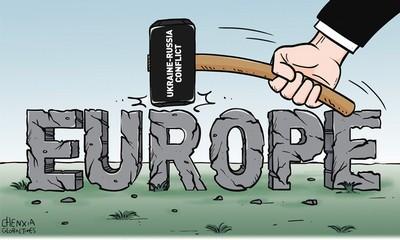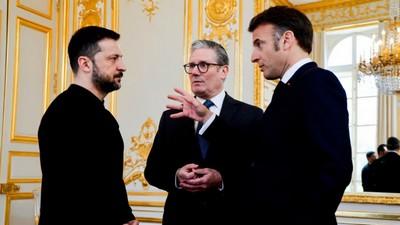
Building trust should precede talks on ‘security guarantees’ for Ukraine
Andrey Kortunov
Following the ongoing Western discussions around the Russia-Ukraine conflict, one cannot miss a noteworthy shift in accent that became particularly visible after US President Donald Trump met a group of European leaders and Volodymyr Zelensky in the White House on August 18.
Speculations about a likely territorial compromise between Moscow and Kiev gave way to deliberations on the post-conflict security guarantees for Ukraine.
This shift should not be particularly surprising. Currently, the prospects for an early Russia-Ukraine summit remain unclear. For European leaders, who for a long time insisted on the unconditional “return to the borders of 1991,” the question of the likely territorial concessions by Kiev becomes an uncomfortable subject to focus on.

How do they envisage the security guarantees for Ukraine in leading European capitals? The crystal-clear position of the Trump administration on keeping Ukraine outside of NATO blocks the most radical and the most attractive mechanism of security guarantees that both Kiev and European capitals have been counting on for many years. It means that in Europe, they have to consider alternative, less-than-perfect options of the security guarantees for Ukraine.
These multiple options essentially boil down to two interconnected European strategies. The first is to upgrade as much as possible the present Ukrainian military capabilities with massive long-term supplies of sophisticated Western weapons, as well as to persistently assist the Ukrainian military-industrial complex. European taxpayers are supposed to foot all the concomitant bills. The second strategy line implies a permanent European military presence in Ukraine, the scale and format of which, so far, is not clearly defined.
These two strategies might look fine on paper, but in real life, they will inevitably encounter formidable obstacles. The most evident one is the position of the above-mentioned Trump administration.
Europeans might be ready to pay almost indefinitely for the large-scale defense-related deliveries to Ukraine, but the military hardware itself is supposed to come primarily from the US. It is yet to be seen whether Washington is willing to authorize an unrestricted flow of the most sophisticated US-made weapons to Europe, especially if the US faces mounting challenges to its security interests in other parts of the world.
Still, the crux of the matter is not in the present difficult state of transatlantic relations. Far more important is the fact that security in Europe, as in the world at large, cannot be divided. This is not a mantra of the Kremlin propaganda, but a reality of the modern world that has been reconfirmed many times.
Europe needs to understand that any attempts to ensure the safety of Ukraine without taking into account Russia’s security concerns would move Europe in the wrong direction. Moscow will inevitably try to protect itself against what it will consider to be existential challenges to its national security and even its mere existence. As a result, the post-conflict Europe will turn into a place of permanent military-political confrontation and an uncontrolled arms race, which, at worst, will, at some point, lead to a large European war. The only reasonable alternative to the mutual assured insecurity on the continent is a consistent movement in the direction of a new, inclusive and comprehensive military-political system. This movement cannot possibly start with more arms or more troops on the European ground. Instead, one should work on the restoration of broken communication lines between the East and the West, especially in the military and diplomatic spheres.
When channels of communication are back in operation, the first basic confidence-building measures may follow, allowing for the increase in the predictability of actions on both sides and even to lay the foundations of future trust. After the first stage is completed, it would be possible to consider new negotiations on arms control in Europe – both in its conventional and nuclear dimensions. The road toward a new European security system will be a long and difficult one, with many potholes along the way.
